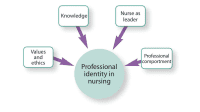Redefining the physician–nurse relationship.
Traditionally, physician–nurse relationships have been viewed as superior–subordinate. Despite clinical work environment advances that demonstrate teamwork and interprofessional collaboration, power hierarchies still exist. However, recent deployments of physicians to intensive care units (ICUs) during the COVID-19 pandemic may change this authoritarian dynamic.
Recent conference presentations and publications have featured physician views on nursing after deployment. I attended one such presentation that really got my attention. Presenters compared physician attitudes about nurses before and after ICU orientation and training, including their reactions to working alongside seasoned nurses. The results included increased physician appreciation for nurses and improved communication after ICU deployment. Physicians described their nursing role experience as consumed by excessive and inefficient documentation and challenging workflows.
The reports of these physician experiences reminded me of an 1895 poem by Mary T. Lathrap, “Judge Softly” (later retitled “Walk a Mile in His Moccasins” because of the oft-repeated line.) The poem provides an analogy for the lessons learned by physicians.
I did a little research and found several recent blogs, studies, and posters about physicians who worked in ICUs to supplement nursing staff stretched dangerously thin during one of the COVID-19 surges. They all contain stories of heightened appreciation for the remarkably hard work performed by ICU nurses.
On the one hand, I’m gratified that physicians can gain such enhanced respect and appreciation through these experiences. On the other hand, I find it enlightening that physicians must go through such a stressful process to appreciate the patience, skills, and endurance of the nurses who should have been viewed as colleagues rather than subordinates in the first place. I hope these experiences prove to enhance the physician–nurse relationships for the long-term. Physicians can learn a great deal from nurses, but they have little understanding of nursing roles and responsibilities. And no convenient methods exist for providing these valuable insights, other than the recent deployments during a time of distress.
In hospitals and academic medical centers, nurses already teach medical students, interns, and residents, but within the context of the traditional hierarchy. Why not enhance that current practice with a “shadowing” experience during medical school and residency training? Or during resident and new medical staff orientation? (Read about an innovative program to promote increased physician understanding of the nurse’s role on page 19.)
The future will require physicians and nurses to be flexible and ready to deploy to different areas during the next disaster. To be prepared, perhaps a good place to start is with a walk-a-mile-in-my-shoes experience and a copy of Lathrap’s poem.


Lillee Gelinas, DNP, RN, CPPS, FAAN
Editor-in-Chief
References
Akbar N, Wong G, Yoon J, et al. Physician views of nursing following their redeployment as ICU nurses during the COIVD-19 pandemic. Poster. Humber River Hospital.
Coughlan C, Nafde C, Khodatars S, et al. Covid-19: Lessons for junior doctors redeployed to critical care. Postgraduate Medical Journal. 2020;97(1145):188-191. doi:10.1136/postgradmedj-2020-138100
Dunning J. COVID-19 has taken me from surgeon to ICU nurse. Nursing Standard. April 2020.
Haas S, Smith RE. As clinicians are redeployed for COVID-19, onboarding takes on extra importance. STAT News. August 2020.
Moyal-Smith R, Sinyard RD, Goodwin C, Heinrich N, Molina G, Haas S. Rapid Onboarding: A toolkit for redeployed clinicians. NEJM Catalyst. December 2021. doi:10.1056/CAT.20.0570
Vera San Juan N, Camilleri M, Jeans JP, Monkhouse A, Chisnall G, Vindrola-Padros C. Redeployment and training of healthcare professionals to intensive care during COVID-19: A systematic review. January 2021. doi:10.1101/2021.01.21.21250230


















